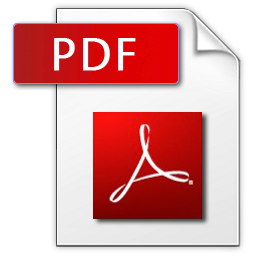2015, volume 19, №6

Title of Issue

Editors Remark

Content

Review Papers
The nature of oscillations of ion currents in the ion track electronics

D Fink1, A Kiv2, Y Shunin3, N Mykytenko4, T Lobanova-Shunina6, A Mansharipova5, T Koycheva4, R Muhamediev5, V Gopeyenko7, N Burlutskaya7, Y Zhukovskii3, S Bellucci8
COMPUTER MODELLING & NEW TECHNOLOGIES 2015 19(6) 7-13
1Instituto de Fisica, Universidade Federal do Rio Grande do Sul, Porto Alegre, RS, Brazil
2Ben-Gurion University, PO Box 653, Beer-Sheva 84105, Israel
3Institute of Solid State Physics, University of Latvia, 8 Kengaraga Str., LV-1063 Riga, Latvia
4South-Ukrainian National Pedagogical University, 26020 Odessa, Ukraine
5Institute of Information and Computational Technologies MES RK, SDU, Kazakhstan
6Riga Technical University, Faculty of Mechanical Engineering, Transport and Aeronautics, Latvia
7ISMA University, 1 Lomonosova Str., Bld 6, LV-1019, Riga, Latvia
8INFN-Laboratori Nazionali di Frascati, Via Enrico Fermi 40, I-00044, Frascati-Rome, Italy
The paper contains the description of the main features of ion current pulsations in track devices. The conditions under which the pulsations arise are discussed. We describe different approaches that are used for interpretation of the effect of ion current pulsations. In particular the generalized model of current spikes in track devices is considered. To create this model a special modification of the classical molecular dynamics was developed. The results of application of this model coincide with the main experimental data concerning the ion current pulsations in track devices.
Machine learning methods: An overview

Ravil I Muhamedyev
COMPUTER MODELLING & NEW TECHNOLOGIES 2015 19(6) 14-29
Institute of Problems of Information and Control, Ministry of Education and Science of the Republic of Kazakhstan. Pushkina 125, Almaty Kazakhstan
High School of management information systems ISMA, Lomonosov st. 1, Riga, Latvia
This review covers the vast field of machine learning (ML), and relates to weak artificial intelligence. It includes the taxonomy of ML algorithms, setup diagram of machine learning methods, the formal statement of ML and some frequently used algorithms (regressive, artificial neural networks, k-NN, SVN, LDAC, DLDA). It describes classification accuracy indicators, the use of “learning curves” for assessment of ML methods and data pre-processing methods, including methods of abnormal values elimination and normalization. It addresses issues of application of ML systems at the processing of big data and the approaches of their solution by methods of parallel computing, mapreduce and modification of gradient descent.
Mathematical and Computer Modelling
Modelling of the subsystem of estimation of navigational parameters in automatic vehicle control systems

A Mrochko
COMPUTER MODELLING & NEW TECHNOLOGIES 2015 19(6) 30-34
ISMA University, 1 Lomonosova Str., Bld 6, LV-1019, Riga, Latvia
One of the most actively developing spheres of applying modern information technologies is transport. Divisions of different services, departments and organisations are actively introducing and employing the system of Automatic Vehicle Location (AVL). The information systems of Automatic Vehicle Location solve the task of controlling and guiding transport means. Employing modern telecommunication technologies along with satellite navigation systems (SNS) facilitates and improves controlling of the mobile objects (MO). Modelling of the work and analysis of these systems’ efficiency indicators sufficiently reduces the periods and costs of their testing and introducing in a particular region.
Optimisation of coordination’s selection by innovation and investment projects

Ilana Ter-Saakova
COMPUTER MODELLING & NEW TECHNOLOGIES 2015 19(6) 35-39
Baltic International Academy, 4 Lomonosova Str., LV-1019, Riga, Latvia
The steady onward progress of engineering developments, together with increasing competition, implies the need for the development of implementation for novelties and innovations. This involves a huge number of innovative projects emerging, thus consecutively defining the formation of investment criteria.
Earth as a building material for reproduction of ancient buildings in China Meishan cultural park

Jinge Luo1, Xiaofei Wang2, Junhui Luo3
COMPUTER MODELLING & NEW TECHNOLOGIES 2015 19(6) 40-44
1School of Arts and Design and School of Architecture, Hunan University, Changsha, 410082 China
2School of Civil Engineering, Dalian University of Technology, Dalian 116024 China
3Institute of Geotechnical Engineering, Southeast University, Nanjing 210096, China
Rammed earth was vastly used for ancient buildings in the Meishan region in the central south part of China. However, these rammed earth buildings are rarely found nowadays. During the construction of Meishan Cultural Park, a park that reproduces the ancient architectures and cultures of Meishan region, the rammed earth architectures need to be reconstructed. In this paper, preliminary designs of these buildings were investigated. Specifically, the procedures to build the wall and to select the soils were introduced first. Then the seismic resistance behaviours of a typical rammed earth building in the ancient Meishan region was investigated using finite element modelling. The designed rammed earth walls were found to be able to satisfy the strength requirements of modern building standards. This paper also shows that the modelling of rammed earth buildings can be geotechnical in nature, as opposed to simply structural analysis.
